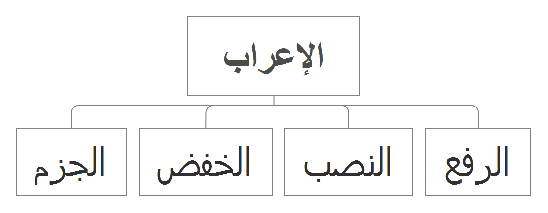

It can only be حَـرْفُ مَـدِّ (a letter of elongation), since nothing precedes it except a letter bearing a vowel related to it – like when you say: مَـالَ wherein the alif = ا is حَرْفُ مَدِّ (a letter of elongation) only. And in regards to the first case mentioned it is also called حَـرْفُ مَـدِّ (a letter of elongation), because the sound is lengthened with the expression of it. حَـرْف الْـعِلَّةِ (the weak letter) is called حَـرْفُ اللِّينِ (the soft letters = ا, و, ي) when it occurs vowelless and coming after it is a sound-letter and at the same time it is preceded by a vowel related to it – like found in the words طُـول and حِـيل or unrelated to it like found in the words نَـوْم and خَـيْر.

Sukuun (ــْـ) is affixed to every letter except soft alif because by its nature it is silent and vowelless. They are the ḍammah (ــُـ) which stands in relationship with the letter waaw (و), the fatḥah (ــَـ) which stands in relations with alif (ا), the kasrah (ــِـ), which stands in relations with yaa (ي). There are three vowels which make the pronunciation of the letters possible. They are characterized this way because change occurs in them in under certain conditions. They are:Įach of the letters is sound except, alif (ا), waaw (و) and (ي). There are fourteen (14) Shamsiyyah letters. like when you say: الشَّمْسُ and sometimes pronounce it saying: أَشْشَمْسُ. As for al-Qamariyyah, the sound of the definite article is clearly expressed with it – like when you say: الْقَمَرُ. Ash-Shamsiyyah is that in which the laam (ل) of the definite article (ال) is not apparent with the rest of the word, but rather its sound is concealed, and standing in its place is a vowelized letter that is the same as the first letter of the noun to which the definite article is attached. The first of them is hamzah (أ) and the last of them is yaa (ي) and they are of two (2) kinds Shamsiyyah and Qamariyyah. The alphabet in the Arabic language is twenty-eight (28). The first matter undoubtedly is that the Arabic language consists of words and words consists of the letters of the alphabet. Preliminary Matters: Point 1 Letters, Words and Sentences The most import of these is morphology and the analysis and parsing of sentences and words. The sciences of the Arabic language are sciences through which the aim is the preservation of the tongue and the pen from mistakes.

These rules or principles are known as the Arabic Sciences. When the Arabs became fearful of the ruination of the Arabic Language after they began to intermingle with foreigners, they started to write it down in dictionaries and they firmly establish its rules in order to preserve it from errors. It (the Arabic Language) has come to us by way of transmission, by way of the Noble Qur’an and Hadith which have preserved it for us, as well as by way of reliable sources from among the prose and poetical works of the Arabs. The Arabic Language is the words that the Arabs use to express their intentions. That is to say, one meaning which preoccupies the minds of a single nation of people, because each nation of people expresses itself with expressions that are different from another. There are many languages and they are different from each other in so far as each particular language is standardized by its agreed-upon meaning. Language in general: is what every nation of people uses to express by it what they mean or intend.


 0 kommentar(er)
0 kommentar(er)
